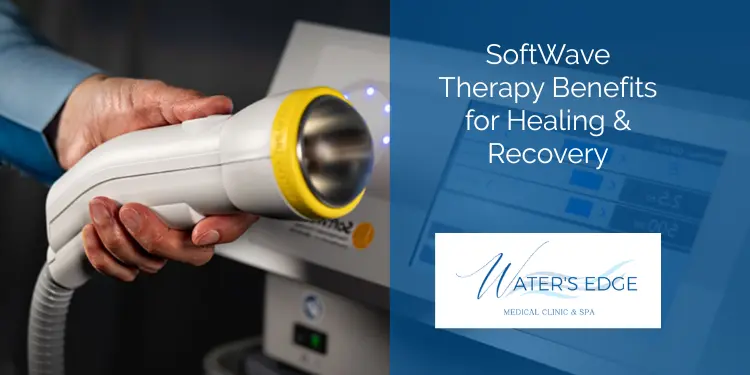Dealing with pain or slow healing can be really frustrating. You might have tried different things, but nothing seems to stick. That’s where SoftWave Therapy benefits come in. This innovative treatment helps your body heal itself using sound waves. This article explores each SoftWave Therapy benefit, how it works, and what you need to know before getting started.

Key Takeaways
- SoftWave Therapy uses sound waves to encourage your body’s natural healing processes, which can help with pain and recovery.
- It’s a non-invasive treatment with little to no downtime, meaning you can usually get back to your daily routine right after a session.
- While not always covered by insurance, many people find SoftWave Therapy a good investment for long-term health and avoiding more costly treatments like surgery.
Understanding SoftWave Therapy Benefits and How It Promotes Healing
SoftWave therapy is a pretty interesting approach to healing that uses your body’s own processes to get things back on track. It’s not some magic wand, but more like a helpful nudge for your body’s natural repair systems. Basically, it involves using sound waves, specifically acoustic waves, to get to the root of an issue and encourage healing from within. This method is non-invasive, meaning no cutting or needles, which is a big plus for many people.
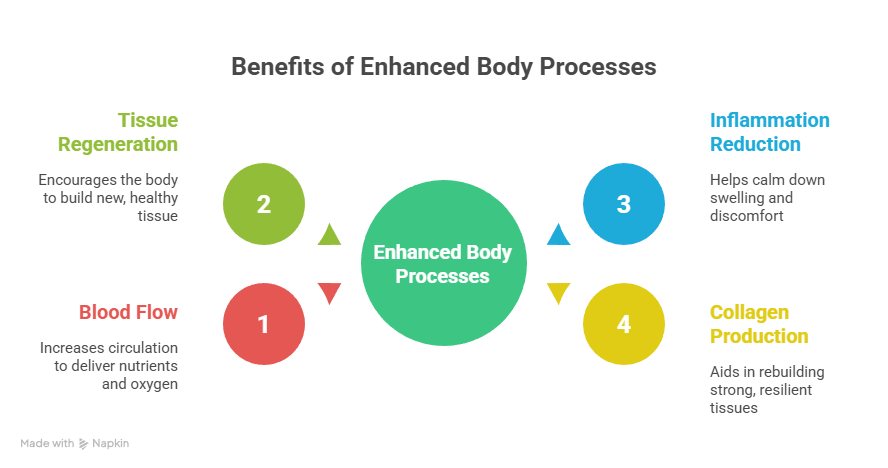
So, how does it actually work to promote healing? When the SoftWave device is applied to an injured or painful area, it sends these low-energy sound waves deep into the tissues. These waves do a couple of important things. First, they help increase blood flow and metabolism in the targeted spot. Think of it like sending more resources and workers to a construction site – more oxygen and nutrients arrive, which speeds up the repair of damaged cells. It also helps stimulate the production of growth factors, which are like the building blocks your body needs to regenerate tissue. This is particularly helpful for things like torn ligaments or strained muscles.
Another key benefit is its effect on inflammation. SoftWave therapy can help calm down inflammation, which is often a major source of pain and can slow down healing. By reducing inflammation, it creates a better environment for tissues to recover. It also encourages the production of collagen, a protein that’s super important for tissue strength and repair. This can lead to better regeneration and remodeling of the injured area, making it stronger than before.
Here’s a quick look at what happens:
- Stimulates Blood Flow: Increases circulation to deliver vital nutrients and oxygen.
- Promotes Tissue Regeneration: Encourages the body to build new, healthy tissue.
- Reduces Inflammation: Helps calm down swelling and discomfort.
- Boosts Collagen Production: Aids in rebuilding strong, resilient tissues.
The core idea behind SoftWave therapy is to work with your body’s inherent healing capabilities. It’s about giving your natural repair mechanisms a boost, rather than trying to force healing through external means. This can lead to more robust and lasting recovery.
One of the really appealing aspects is that it’s a drug-free option. For people looking for alternatives to pain medication or more invasive treatments, this is a significant advantage. It can be used on its own or alongside other therapies to support the healing journey. The recovery period after a SoftWave treatment is typically very short, allowing you to get back to your daily activities without much downtime, which is a huge benefit for anyone dealing with an injury or chronic pain. If you’re looking for a way to support your body’s natural healing, exploring SoftWave therapy benefits might be a good step.
Top SoftWave Therapy Benefits for Pain Relief and Recovery
When you’re dealing with persistent pain or recovering from an injury, finding a treatment that actually works can feel like a quest. SoftWave Therapy presents a compelling option, offering a non-invasive approach to help your body heal and reduce discomfort. It’s not just about masking symptoms; this therapy aims to get to the root of the problem.
One of the primary advantages of the sofwave benefits is its effectiveness in pain management. Whether it’s the sharp pain from a sports injury or the dull ache of a chronic condition, the acoustic waves used in the treatment can stimulate blood flow to the affected area. This increased circulation helps to clear out inflammatory substances and deliver vital nutrients, which can significantly reduce pain and tenderness. Many patients report feeling a difference even after their first few sessions.
Beyond just pain relief, SoftWave Therapy actively promotes tissue repair. The therapy works by breaking down scar tissue that might be hindering movement and causing discomfort. It also encourages the production of collagen, a key protein your body needs to rebuild and regenerate damaged tissues. This means that instead of just managing pain, the treatment is helping your body recover more completely.
Here are some key benefits:
- Accelerated Healing: By stimulating the body’s natural regenerative processes, SoftWave Therapy can speed up recovery times for various injuries.
- Reduced Inflammation: The acoustic waves help to decrease inflammation in the treated areas, which is often a major source of pain and stiffness.
- Improved Mobility: As pain decreases and tissues repair, patients often experience a greater range of motion and improved overall function.
- Non-Invasive Approach: Unlike surgical options, SoftWave Therapy treatment requires no incisions and involves minimal to no downtime, allowing you to return to your daily activities relatively quickly.
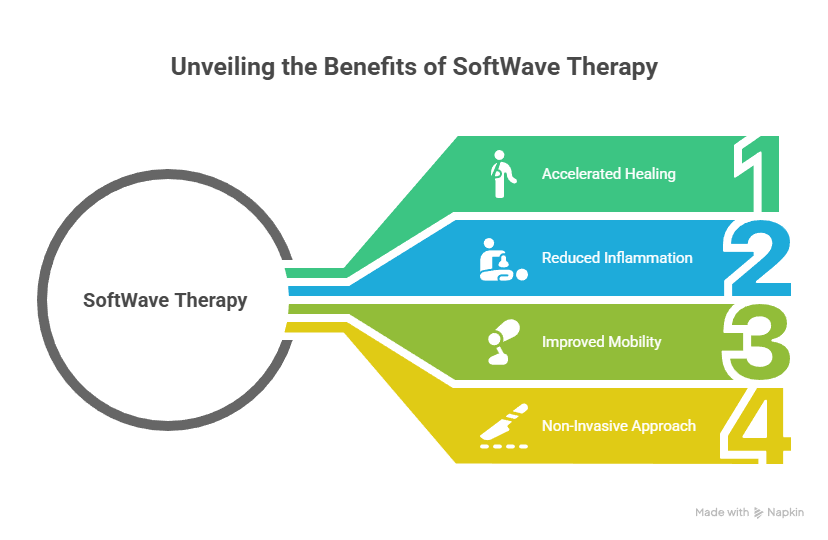
The goal of SoftWave Therapy treatment is to address the underlying issues contributing to pain and slow healing. By encouraging your body’s own repair mechanisms, it offers a path toward more lasting recovery rather than temporary fixes. This can be particularly helpful for conditions that haven’t responded well to other treatments.
For many, the ability to get back to activities they enjoy without constant pain is the most significant outcome. The process is designed to be straightforward, with a typical treatment plan involving weekly sessions over a few weeks. This structured approach helps to build momentum towards recovery. If you’re looking for a way to manage pain and support your body’s healing journey, exploring SoftWave Therapy treatment could be a worthwhile step.
How SoftWave Therapy Treatment Works to Support Long-Term Healing
SoftWave therapy treatment is designed to get your body to heal itself, kind of like giving it a nudge in the right direction. It uses these special sound waves, not the kind you hear, but acoustic energy, that go deep into the tissues where the problem is. Think of it as a gentle but effective way to wake up your body’s natural repair systems.
When these sound waves hit the injured area, they create a sort of mechanical stimulus. This signal tells your cells to get to work. It’s all about jumpstarting your body’s own healing processes without surgery or a long recovery time.
Here’s a breakdown of what happens:
- Increased Blood Flow: The therapy helps widen blood vessels, which means more oxygen and nutrients can get to the damaged spot. This is super important for healing.
- Cellular Stimulation: It encourages the production of things like collagen, which is like the building block for new tissue. It also helps release growth factors that are key for repair.
- Reduced Inflammation: While it’s stimulating healing, it also helps calm down inflammation, which can be a big part of why you’re feeling pain.
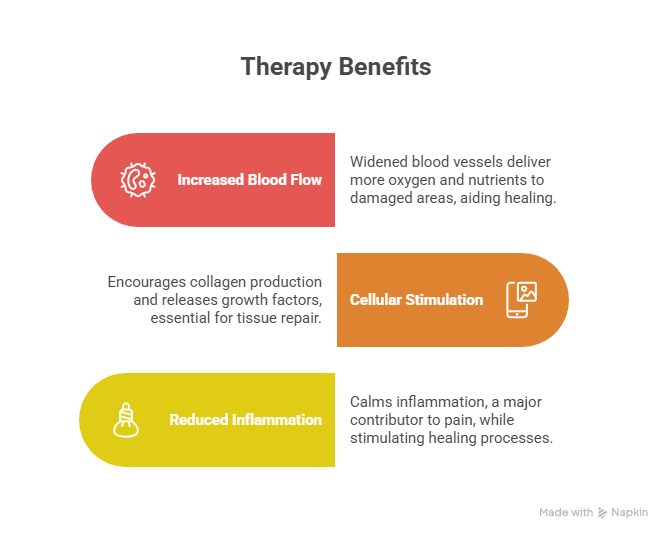
This approach is different from just masking pain with medication. SoftWave therapy healing aims to fix the underlying issue. It’s particularly helpful for injuries that have been around for a while or haven’t responded to other treatments because it gets to the root cause.
The goal is to create an environment where your body can repair itself more effectively and efficiently, leading to lasting results rather than just temporary relief. It’s a way to support your body’s innate ability to recover.
So, when you undergo SoftWave treatment, you’re not just getting a treatment; you’re activating a biological response that promotes genuine, long-term healing.
Are SoftWave Therapy Benefits Covered by Insurance? What You Should Know
When considering SoftWave Therapy, a common question that comes up is about insurance coverage. It’s a bit of a mixed bag, and understanding the landscape can help manage expectations. Generally, SoftWave Therapy is not typically covered by standard health insurance plans. This means that for many individuals, the cost of treatment will be an out-of-pocket expense.
However, this doesn’t mean it’s inaccessible. Many clinics offer package deals or payment plans to make the treatment more affordable. When you compare the cost to other interventions, like surgery or long-term medication, SoftWave Therapy can often be a more economical choice in the long run. It’s about investing in your health and avoiding potentially higher costs down the line.
Here’s a breakdown of what to consider:
- Out-of-Pocket Costs: Be prepared for the possibility that you will need to pay for sessions yourself. Costs can vary based on the number of sessions needed and the specific clinic.
- Value Proposition: Many patients find the investment worthwhile, especially when other treatments haven’t provided relief. The goal is long-term healing and improved quality of life.
- Consultation is Key: Always discuss the financial aspects directly with your chosen healthcare provider. They can explain their pricing structure and any available options.
While direct insurance coverage might be limited, the focus remains on the therapeutic benefits and the potential for significant recovery. It’s always a good idea to check with your specific insurance provider, as policies can change, and some plans might offer partial reimbursement for certain types of regenerative therapies, though this is less common for softwave therapy covered by insurance.
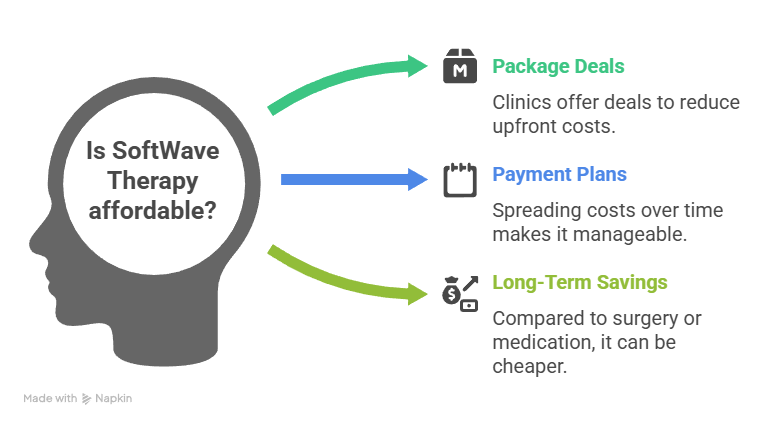
The financial aspect of any treatment is important, but it’s also worth weighing against the potential gains in health and well-being. Many find that the results achieved with SoftWave Therapy justify the upfront investment, leading to a better quality of life and reduced reliance on other, more costly, medical interventions.
Maximizing SoftWave Therapy Benefits for Lasting Health and Recovery
To really get the most out of your SoftWave Therapy sessions and make sure the healing sticks, there are a few things you can do. It’s not just about showing up for your appointments; it’s about supporting your body’s natural repair processes between treatments. Think of it as a partnership between the therapy and your own efforts.
First off, consistency is key. While a typical treatment plan might involve 3-6 sessions spaced about a week apart, sticking to this schedule is important. Your provider will help map out a plan based on your specific condition, but deviating too much can slow down progress. For example, chronic knee pain might see significant improvement with a consistent approach to SoftWave Therapy for knee pain.
Here’s a breakdown of how to maximize your results:
- Follow Post-Treatment Advice: While SoftWave Therapy generally requires no downtime, your provider might suggest light activity and avoiding strenuous exercise for the rest of the day after a session. This helps your body focus its energy on healing.
- Stay Hydrated: Drinking plenty of water supports overall bodily functions, including circulation and cellular repair, which are vital for recovery.
- Maintain a Healthy Lifestyle: Good nutrition and adequate sleep are foundational for healing. Your body needs the right building blocks and rest to repair damaged tissues.
- Communicate with Your Provider: Keep your healthcare team informed about how you’re feeling. Any changes or concerns should be discussed so they can adjust your treatment plan if needed.
It’s also worth noting that the regenerative journey with SoftWave Therapy is often a gradual process. This cutting-edge treatment is designed to promote natural healing over time, so patience and adherence to your personalized plan are important. You can embark on a 12-week regenerative journey with SoftWave Therapy, understanding that progress may be gradual as your body heals as explained in this guide.

Remember that SoftWave Therapy works by stimulating your body’s own stem cells and natural healing mechanisms. This means you’re not just treating symptoms; you’re addressing the root cause of the issue, which is key for long-term recovery.
By actively participating in your recovery and following these simple guidelines, you can significantly boost the effectiveness of SoftWave Therapy and pave the way for lasting health improvements.
Want to get the most out of your SoftWave Therapy? We’ve got tips to help you achieve lasting health and speed up your recovery. Discover how to make your sessions work even better for you. Ready to feel your best? Visit our website to learn more and book your appointment today!
Wrapping Up Your Healing Journey
So, if you’re dealing with pain that just won’t quit, or an injury that’s keeping you from doing what you love, SoftWave Therapy might be worth looking into. It’s a pretty neat way to help your body heal itself, using sound waves to get things moving. Plus, the fact that you don’t have to take time off work or cancel plans is a big plus.
It’s not a magic fix for everyone, of course, and talking to your doctor is always the smart move to see if it fits your situation. But for many, it’s a way to get back to feeling good without surgery or a bunch of pills. Think of it as giving your body a little nudge in the right direction for recovery.
Frequently Asked Questions

What exactly is SoftWave Therapy and how does it help the body heal?
SoftWave Therapy is a special kind of treatment that uses sound waves to help your body heal itself. Think of it like a gentle, focused sound massage that goes deep into your muscles and tissues. These sound waves help improve blood flow, which brings more healing stuff to the injured area. They also help calm down swelling and can even get your body to make more of its own healing cells, like stem cells. It’s a way to speed up recovery without surgery or strong medicines.
Can SoftWave Therapy really help with pain and injuries, especially if other treatments haven’t worked?
Yes, SoftWave Therapy has shown great results for many people, even when other methods didn’t quite do the trick. It’s known for helping with long-lasting pain, like from old injuries or conditions like arthritis. Because it works by boosting your body’s natural healing powers and reducing swelling, it can tackle the root of the problem. Many athletes and people with tough injuries find relief and get back to their activities faster with this therapy.
Is SoftWave Therapy covered by health insurance, and what should I know about the costs?
Whether SoftWave Therapy is covered by insurance can vary. It’s often considered a newer treatment, so some insurance plans might not cover it fully or at all. The cost can depend on how many sessions you need, which is usually based on your specific condition. Many clinics offer package deals to make it more affordable. It’s best to talk directly with the clinic providing the therapy and check with your insurance company to understand the costs and potential coverage for your situation.
If you have any additional questions or if you would like to see if softwave therapy is right for you, please contact us at Waters Edge Medical Clinic 727-550-0855.

